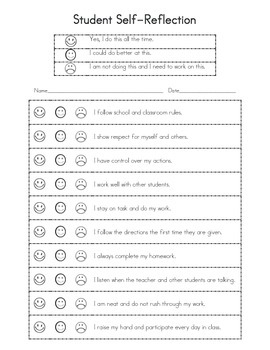
This is a formative assessment, so a grade is not the intended purpose.

Both student and teacher can quickly assess whether the student acquired the intended knowledge and skills. The teacher collects assessment results to monitor individual student progress and to inform future instruction. Teachers may elect to have students self-correct. Students respond individually to short, pencil–paper formative assessments of skills and knowledge taught in the lesson. By reading student journals, teachers can identify class and individual misconceptions and successes. Students can reflect on and process lessons. Students write their reflections on a lesson, such as what they learned, what caused them difficulty, strategies they found helpful, or other lesson-related topics. This exercise quickly generates multiple ideas that could be turned into longer pieces of writing at a later time. Teachers collect their responses as a “ticket out the door” to check for students’ understanding of a concept taught. Students write in response to a specific prompt for a short period of time. The prompt stimulates student reflection on the lesson and helps to process the learning. Students consider what they have learned by responding to the following prompt at the end of the lesson: 3) things they learned from your lesson 2) things they want to know more about and 1) questions they have. Students learn to formulate questions that address issues to facilitate their own discussion and arrive at a new understanding.
Student self reflection series#
The questions initiate a conversation that continues with a series of responses and additional questions. Students ask questions of one another about an essential question, topic, or selected text. You can quickly scan the written responses to assess student understanding. This strategy helps students develop fluency differentiate between the reading of statements and questions and practice phrasing, pacing, and reading dialogue.Īsk a single focused question with a specific goal that can be answered within a minute or two. Students mark text to identify a particular concept and chime in, reading the marked text aloud in unison with the teacher. Next, they pair with a designated partner to compare thoughts before sharing with the whole class. Students take a few minutes to think about the question or prompt. For example, the corner choices might include “I strongly agree,” “I strongly disagree,” “I agree somewhat,” and “I’m not sure.” Students then move to the appropriate corner of the classroom to indicate their response to the prompt. The teacher poses a question or makes a statement. Using response devices, the teacher can easily note the responses of individual students while teaching the whole group.Ī quick and easy snapshot of student understanding, Four Corners provides an opportunity for student movement while permitting the teacher to monitor and assess understanding. Index cards, signs, whiteboards, magnetic boards, or other items are simultaneously held up by all students in class to indicate their response to a question or problem presented by the teacher. This strategy requires engagement by all students and allows the teacher to check for understanding within a large group. Students can show anywhere from five fingers to signal maximum understanding to one finger to signal minimal understanding. Hand signals can be used to rate or indicate students’ understanding of content. This can be done orally, visually, or otherwise. Have students summarize or paraphrase important concepts and lessons. Give a short quiz at the end of class to check for comprehension.

Then, ask them to consider how they would apply this concept or skill in a practical setting. To help students grasp ideas in class, ask pointed questions that require students to use their own prior knowledge.ĭuring the last five minutes of class ask students to reflect on the lesson and write down what they’ve learned. So of course it’s surprising when several students later admit that they’re lost.

Avoid yes/no questions and phrases like “Does this make sense?” In response to these questions, students usually answer “yes”.


 0 kommentar(er)
0 kommentar(er)
